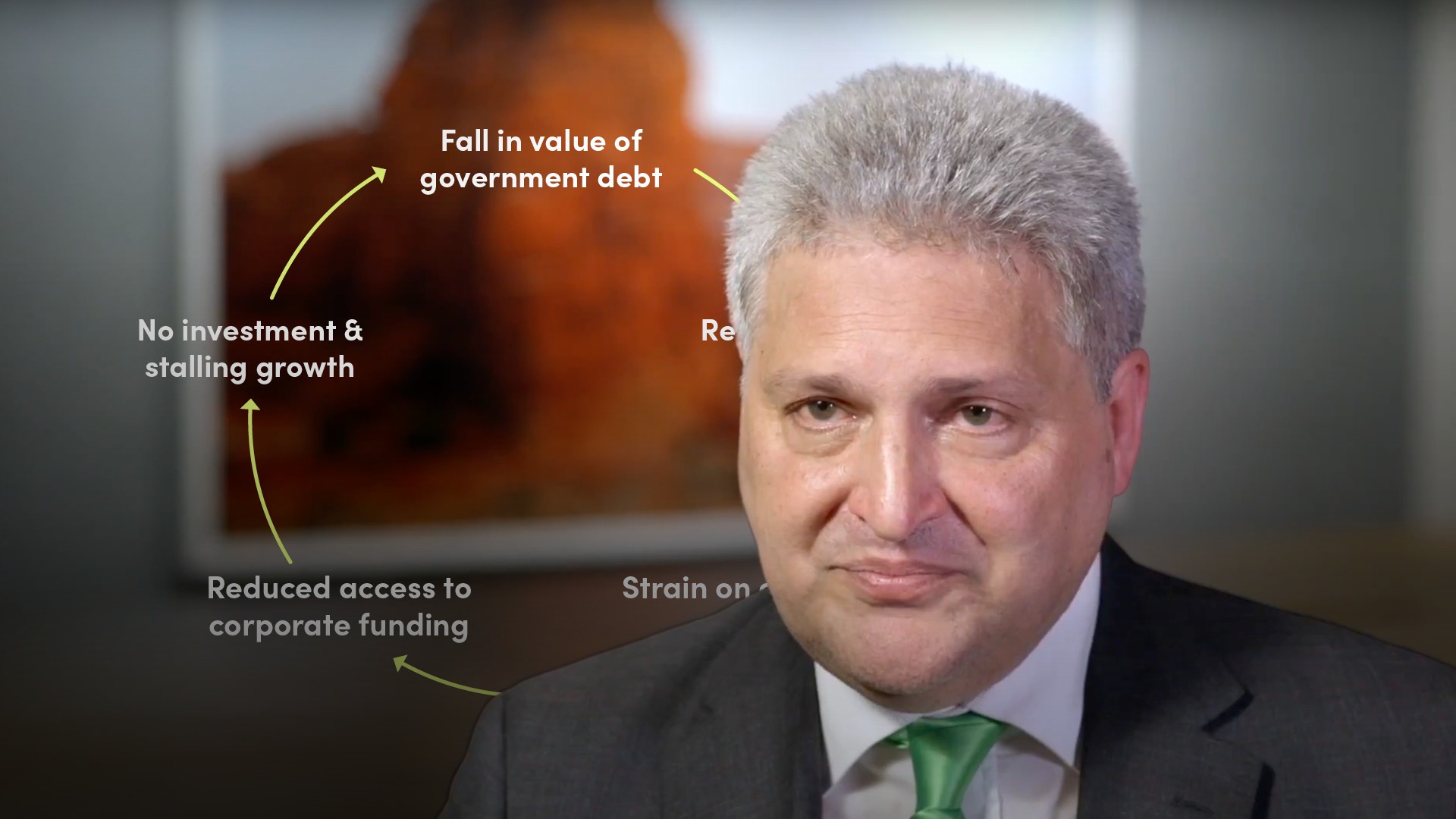
What is the Sovereign Bank Doom Loop?

Keith Mullin
35 years: Capital markets editorial
The sovereign bank doom loop has been one of the most discussed, analysed and researched topics since the Global Financial Crisis. In this second video of the series, Keith explains what is the sovereign bank doom loop, its impact, and what regulators are doing to try to mitigate this risk.
The sovereign bank doom loop has been one of the most discussed, analysed and researched topics since the Global Financial Crisis. In this second video of the series, Keith explains what is the sovereign bank doom loop, its impact, and what regulators are doing to try to mitigate this risk.

What is the Sovereign Bank Doom Loop?
5 mins 39 secs
Key learning objectives:
Discuss the relationship between Banks and Sovereigns, and the consequent impact on the economy
Explain the improvements in Bank regulation to mitigate ‘SBDL’ and evaluate their success
Identify ways to potentially break the sovereign bank doom loop.
Overview:
This is the idea whereby Banks and Sovereigns are inseparably exposed to each other. This is seen through weak, over-indebted governments and their relationship to the solvency of their banks and vice versa. This concept was evident during the Global Financial Crisis.
How can weak banks affect Government budgets?
Terminally weak banks can put a significant strain on and even threaten government budgets via:
- Costly bail outs
- Expensive fall outs
How can weak Governments affect Bank’s solvency?
Governments with unsustainable levels of debt, during times of market stress and loss of market confidence can:
- Have serious consequences for the strength of bank balance sheets
- Impede banks’ access to wholesale funding
- Cause a domino effect through the system
- Choke off the extension of bank credit into the economy, and slow economic growth.
In what ways have systemic risk factors been mitigated?
Improvements in Bank Regulation:
- Banks must hold more capital
- Maintain a buffer of HQLA
- Maintain stable access to funding
- Reduce leverage
Has regulation worked, and how can the Sovereign-Bank Doom Loop be broken?
Has it worked?
More stringent bank regulation has not solved the issue of banks with large exposures to the debt of their governments. In fact, HQLA definitions incentivise banks to hold the debt of their governments.
Recent reforms do not directly address the exposures of banks to sovereign risk, and eurozone banks have no regulatory incentive to manage their sovereign exposures prudently.
Can it be broken?
Potentially, by creating a multi-government eurozone debt security, it would reduce systemic risk and break the sovereign bank doom loop.

Keith Mullin
There are no available Videos from "Keith Mullin"

